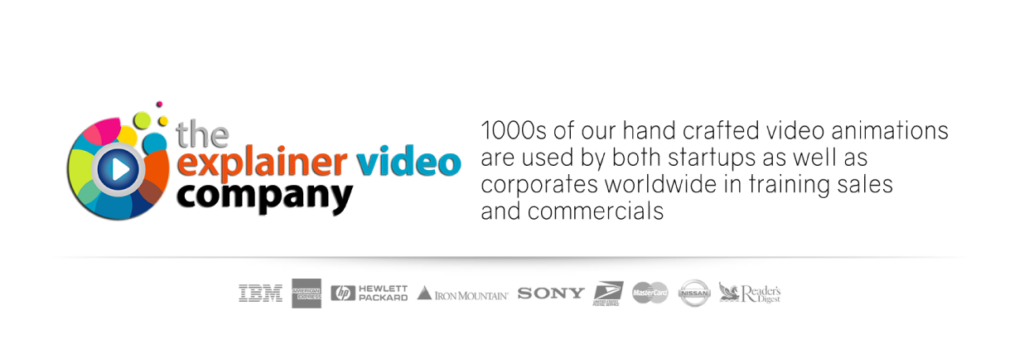Explainer Videos for Cloud Native Technologies

Table of Contents
Explainer videos have become an essential communication tool in the tech industry, especially for simplifying and explaining complex topics like cloud native technologies. These technologies include methods and tools for building and managing applications that make full use of the scalability and flexibility of modern cloud environments.
This article covers why explainer videos are pivotal in this context, delves into their benefits, discusses the key components that make them effective, and lists best practices along with a comprehensive FAQ section.
| Subject Title | Subject Description |
|---|---|
| Understanding Cloud Native Technologies | An overview of cloud native technologies, their components, and functionality. |
| Applications and Users of Cloud Native Technologies | Exploration of various industries that utilize cloud native technologies and examples of how they are used. |
| Benefits of Explainer Videos | Discussion on how explainer videos can simplify complex cloud concepts and enhance learning and understanding. |
| Key Components of Effective Explainer Videos | Insight into what makes an explainer video successful, including scriptwriting, visuals, and audio elements. |
| Best Practices and Successful Examples | Guidelines for creating compelling explainer videos with examples of successful implementations. |
| FAQ | Detailed answers to common questions about explainer videos for cloud native technologies. |
Understanding Cloud Native Technologies

Cloud native technologies are designed to optimize the advantages of cloud computing, such as elasticity, scalability, and flexibility. They typically employ:
- Microservices: An architectural approach that breaks down applications into smaller, independent services.
- Containers: Technologies like Docker that encapsulate an application and its dependencies in a container that can run on any computing environment.
- Service Meshes: Infrastructure layers that manage service interactions across microservices, ensuring they are secure and efficient.
- Immutable Infrastructure: Infrastructure that is automatically replaced rather than manually updated, reducing the risk of errors and inconsistencies.
- Declarative APIs: Interfaces that allow developers to specify the desired state of an application without describing how to achieve it.
These components support the deployment of applications across various cloud environments, enhancing the ability to manage large-scale systems effectively.
Applications and Users of Cloud Native Technologies

Industries across the spectrum have adopted cloud native technologies to drive innovation and efficiency:
- Financial Services: Use cloud native technologies to manage real-time transaction processing with robust security measures.
- Healthcare: Leverage these technologies to handle sensitive patient data and support telemedicine applications with high availability and compliance.
- Retail: Employ cloud native solutions to adjust quickly to changing consumer demands and handle high traffic volumes during peak times.
- Manufacturing: Utilize cloud native tools to streamline supply chain management and introduce automation effectively.
Benefits of Explainer Videos for Cloud Native Technologies

Explainer videos can transform the complex details of cloud native technologies into accessible and engaging content:
- Improved Understanding: By visualizing concepts, explainer videos make complex information more digestible.
- Enhanced Engagement: Animated visuals and narratives capture and maintain viewers’ attention better than traditional text-based content.
- Higher Retention Rates: Auditory and visual learning aids significantly boost retention, helping viewers remember and understand information long after watching.
- Scalable Training Options: Videos can be distributed globally, offering a consistent training experience to a wide audience at a low cost.
- Marketing Advantage: They provide a means to showcase the advantages and operational efficiencies of cloud technologies to potential customers.

Best Explainer Types for Cloud Native Technology Videos

When it comes to explaining cloud native technologies through videos, selecting the right type of explainer video is crucial. Each style has unique strengths that can cater to different aspects of cloud technologies, making them understandable and relatable to the target audience. Here are the best types of explainer videos for cloud native technologies:
Animated Explainer Videos
Strengths: Animated explainer videos are versatile and engaging, capable of breaking down complex cloud native concepts like microservices architecture or containerization into simple, visually appealing graphics. They allow for creative storytelling and can illustrate abstract ideas in a straightforward manner.
Ideal For: Introducing new cloud native tools, explaining how they work, and showcasing the benefits of transitioning to a cloud native environment.
Whiteboard Explainer Videos
Strengths: Whiteboard videos are great for sequential or process-oriented explanations, where each step of a process needs to be clearly outlined and connected. The drawing-on-a-whiteboard style helps keep the viewer engaged as the story builds progressively.
Ideal For: Describing the workflow of continuous integration and continuous deployment (CI/CD) pipelines in cloud environments or illustrating the concept of immutable infrastructure.
Screencast Videos
Strengths: These are digital recordings of computer screen outputs, which are perfect for tutorials and training videos. Screencast explainer videos can effectively demonstrate software tools and platforms used in cloud native ecosystems.
Ideal For: Training developers on using cloud native tools like Kubernetes or Docker, or showcasing the features of a new cloud service management platform.
Live Action Mixed with CGI
Strengths: Combining live action with computer-generated imagery (CGI) can create a realistic and immersive experience. This type is beneficial when you want to connect the digital benefits of cloud native technologies with real-world applications.
Ideal For: Demonstrating the real-time impact of cloud native technologies on businesses, such as how they improve scalability and efficiency in operations.
Motion Graphics Explainer Videos
Strengths: Motion graphics are particularly effective for dynamic and visually rich presentations. They are excellent for grabbing attention and explaining complex data or statistics related to the performance improvements that cloud native technologies can offer.
Ideal For: Explaining service meshes, network data flow within cloud environments, or visualizing performance metrics.
Integration into Cloud Native Explanations

Choosing the right type of explainer video depends largely on the specific content to be conveyed and the target audience. For instance:
- Technical Audiences: More detailed, data-driven videos such as screencasts or motion graphics may be appropriate.
- Non-Technical Audiences: Simpler and more story-driven formats like animated or whiteboard explainers can help make the information more accessible.
By effectively leveraging these different types of explainer videos, organizations can enhance their communication strategies, making cloud native technologies more approachable and easier to understand for everyone involved.
Key Components of Effective Explainer Videos

Effective explainer videos share several critical elements:
- Concise, Focused Scripts: Clear and direct scripts are crucial for conveying information effectively.
- High-Quality Visuals: Engaging animations and graphics that align with the video’s message enhance understanding.
- Professional Voice-over: A strong narrative voice that speaks to the target audience increases the video’s impact.
- Background Music and Sound Effects: These should support and not overshadow the spoken content, enhancing the overall viewer experience.
Best Practices and Successful Examples

Creating compelling explainer videos involves:
- Understanding the Audience: Tailor content to the audience’s knowledge level and interests.
- Focusing on Core Messages: Highlight the most important points without overcrowding the video with too much information.
- Using Case Studies: Real-world applications and testimonials add credibility and relate abstract concepts to practical scenarios.
- Iterative Feedback: Use viewer feedback to refine the video, ensuring it meets its educational and marketing goals effectively.
Conclusion: Explainer Videos for Cloud Native Technologies
Explainer videos serve as a powerful tool for demystifying cloud native technologies, providing an engaging and effective medium to enhance understanding, facilitate training, and promote technology adoption.
By adhering to best practices in video production, businesses can leverage explainer videos to effectively communicate complex information and gain a competitive edge in the market.
Explainer Videos for Cloud Native Technologies: FAQ

What is cloud native technology?
Cloud native technology refers to a set of practices and tools designed to optimize applications for cloud environments, enhancing flexibility, scalability, and reliability.
Why are explainer videos effective for cloud native technologies?
Explainer videos simplify complex technologies, making them easier to understand and more accessible to a broader audience.
How long should an explainer video be?
The ideal length of an explainer video is typically between 1 and 3 minutes, depending on the complexity of the topic.
What makes a good script for an explainer video project?
A good script should be clear, concise, and jargon-free, focusing on key points and designed to engage the specific audience.
How can explainer videos be integrated into a marketing strategy?
Explainer videos can be used on company websites, social media, and presentations to enhance understanding and interest in a product or technology.
What are some challenges in creating explainer videos?
Challenges include condensing complex information into a short format, maintaining viewer engagement, and aligning the video style with the brand’s identity.
Explainer Videos for Cloud Native Technologies An Article by Nicole Delgado 2024 | CMO | Explainer Video Company | Animated Explainer Videos For Business
Explainer Videos for Cloud Native Technologies



